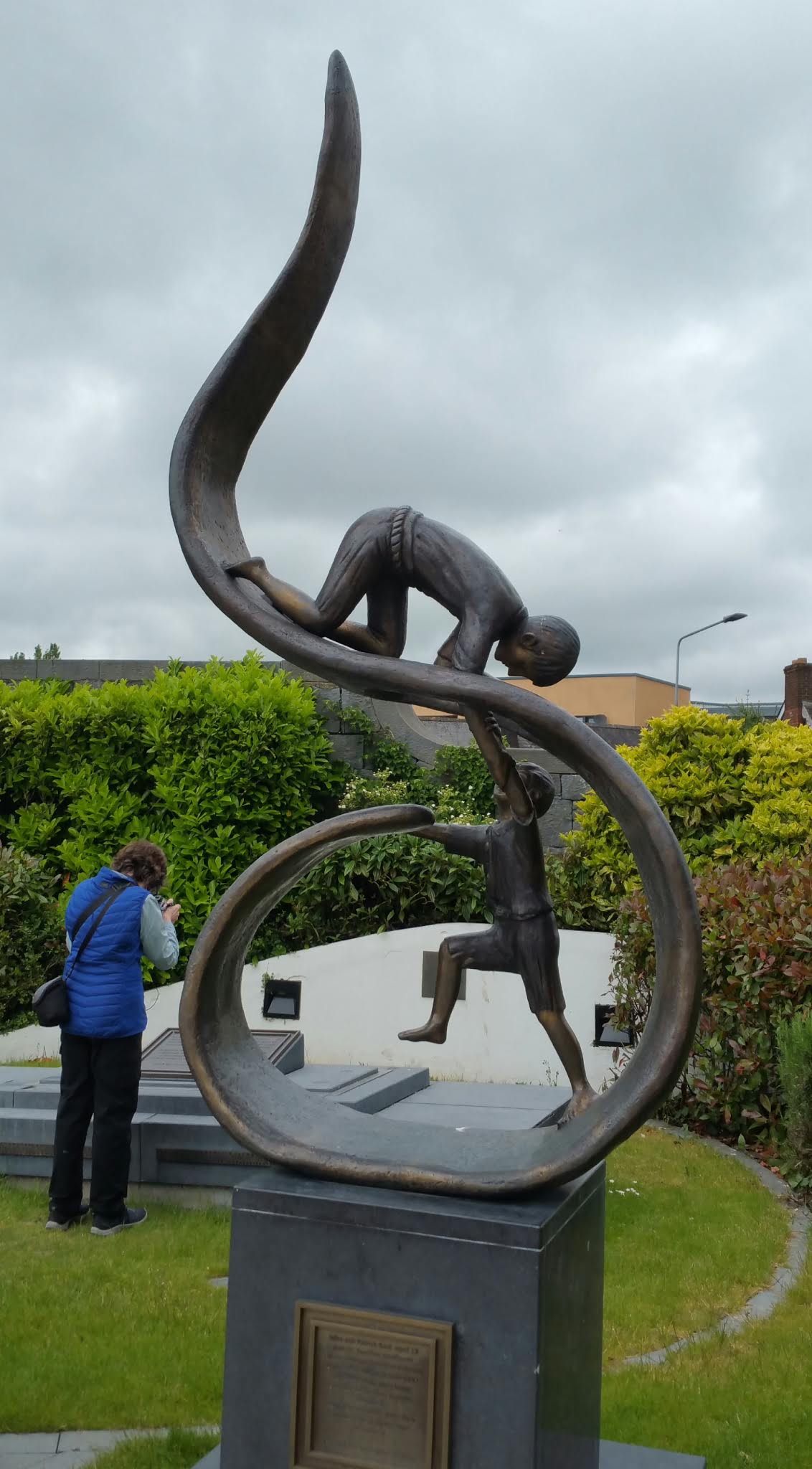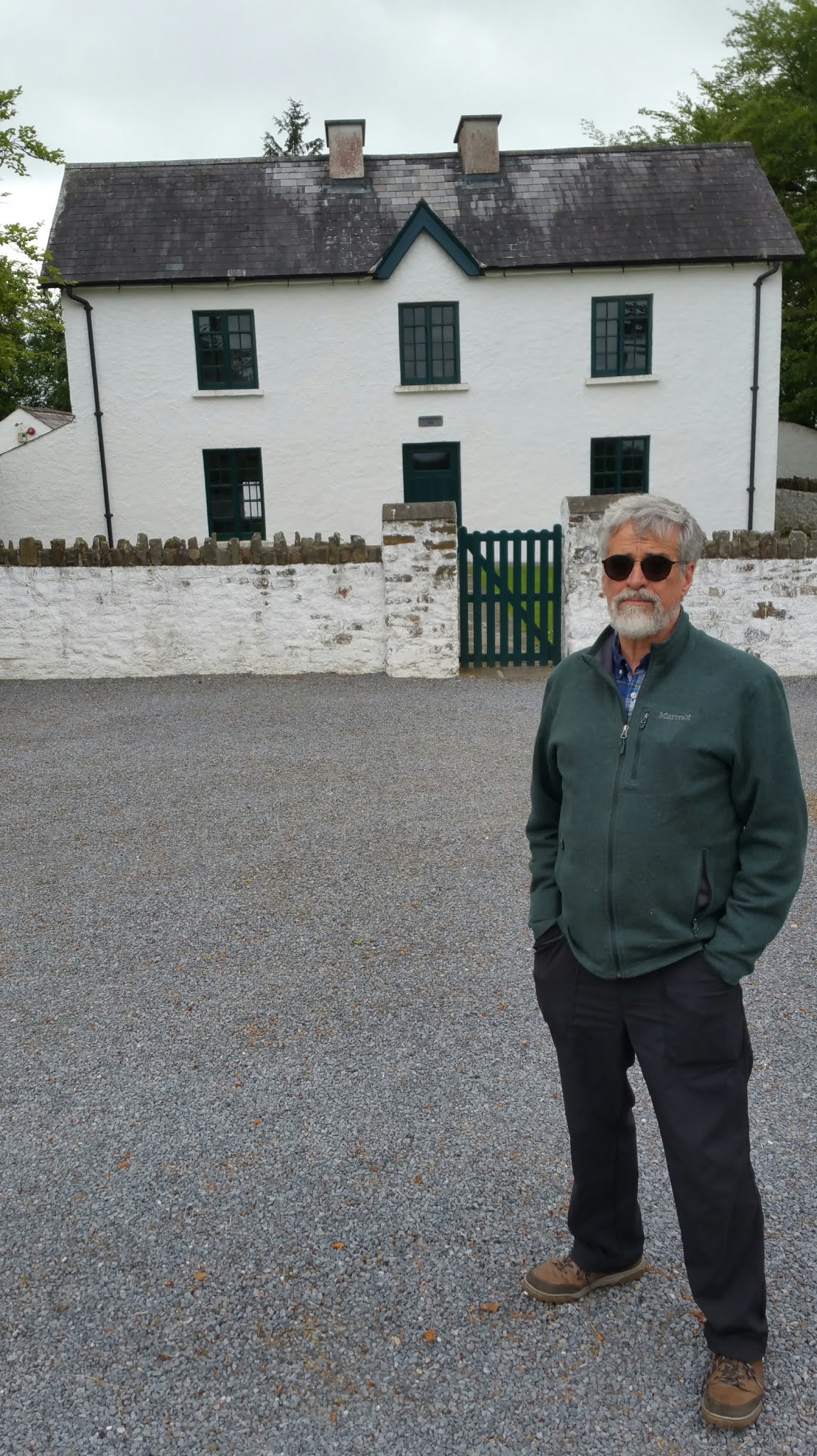It’s not all that far to Tipperary
It’s not that far to Tipperary — not if you start in Kilkenny. That’s what we did. The statue to the left commemorates John and Patrick Saul, two boys abandoned by their parents at the docks in Dublin. The butcher and his wife boarded a ship for Australia after first telling their sons, ages 15 and 13, they had a better chance of surviving if they turned back and made for home in Clonmel, County Tipperary. The year was 1842. The boys, increasingly hungry as they travelled, called in at the newly built workhouse in Kilkenny. Their story surfaced in 2005, when developers began turning the prison-like workhouse into the splendiferous MacDonough Junction Shopping Centre. The statue is one of the highlights of the Kilkenny Famine Experience — a 50-minute audio-visual tour that takes visitors through the story of the Great Hunger as it unfolded in this location. The big surprise came when excavators came upon the forgotten graves of more than 970 people who died here — among them 545 children — mostly between 1845 and 1851. Rations were spartan but few died of starvation. Disease got them first, either typhus, typhoid, diptheria, smallpox, tuberculosis or cholera. Bullying, amputations, riots, death-dealing stampedes, this place had them all. As the potato famine wore on and workhouse conditions worsened, the Saul brothers set out for home. But Tipperary! Sheena and I drove half an hour west into that county, sometimes along one-lane roads with a ridge of grass down the middle. We went not to Clonmel but to the Famine Warhouse, site of an incident known as the Battle of Widow MacCormack’s Cabbage Patch. By 1848, not
surprisingly, the never-ending famine — the deaths, the coffin ships — sparked a reaction. Several of the leaders of the rebels, known collectively as Young Ireland, trapped a group of policemen in this house near Ballingarry. The police took the widow’s children hostage and held on until reinforcements arrived. Before long, most rebel leaders were rounded up, jailed, and transported to penal colonies in Australia. Anybody still with me?

